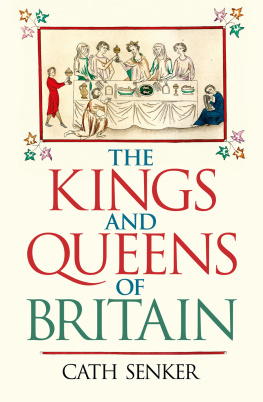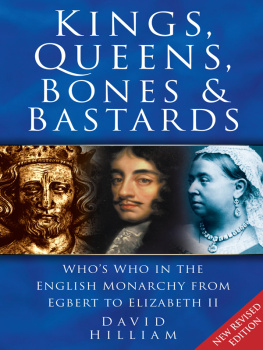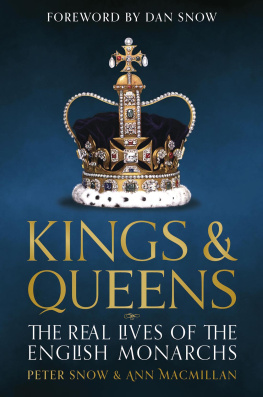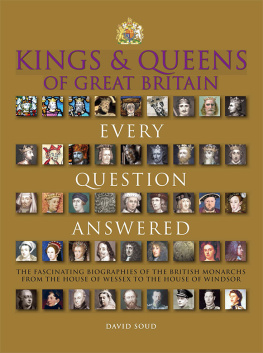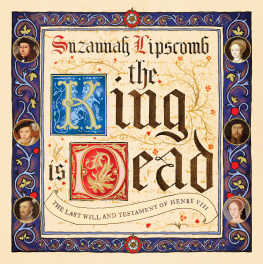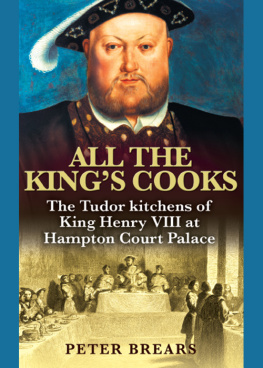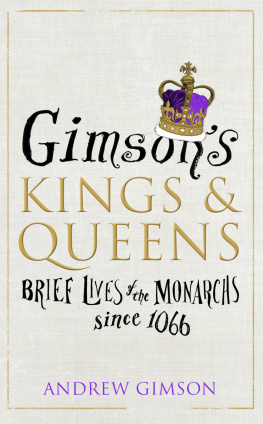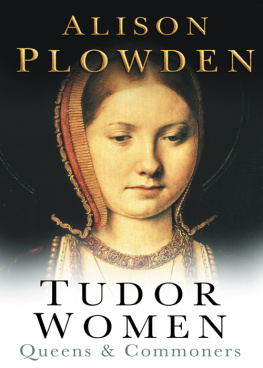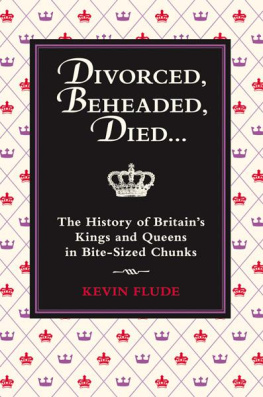PART I: HENRY VII
Chapter One
Founding a Dynasty
When King Henry VII, the first Tudor monarch, was crowned at Westminster Abbey on 30 October 1485, it marked the beginning of more than a century of Tudor rule. The Tudors were an extraordinary dynasty under whose leadership England would be transformed from a minor medieval kingdom on the margins of Europe to a major player on the world stage.
The dynasty ended in 1603 with the death of Henrys granddaughter Elizabeth I. By that time, the country had changed almost beyond recognition. The England of 1485 had been a place of instability where rival nobles would fight each other for power. By 1603, England boasted a strong central government, powerful enough to put down any rebellion. It had undergone a religious reformation, swapping Roman Catholicism for Protestantism with the monarch at the head of a new, independent Anglican Church. By the time of Elizabeths death, England had flourishing trade links with Europe, Asia and the New World, and had become a renowned centre of art and culture.
Arguably, many of these changes might never have come about or would have occurred in very different ways were it not for the personalities and actions of this remarkable family of monarchs. Two of them Henry VIII and Elizabeth I were among the most famous and influential people ever to sit on the English throne. And yet it is very easy to imagine a world in which the Tudor era never happened. After all, Henry VIIs accession was far from inevitable, and his claim to the throne tenuous to say the least.
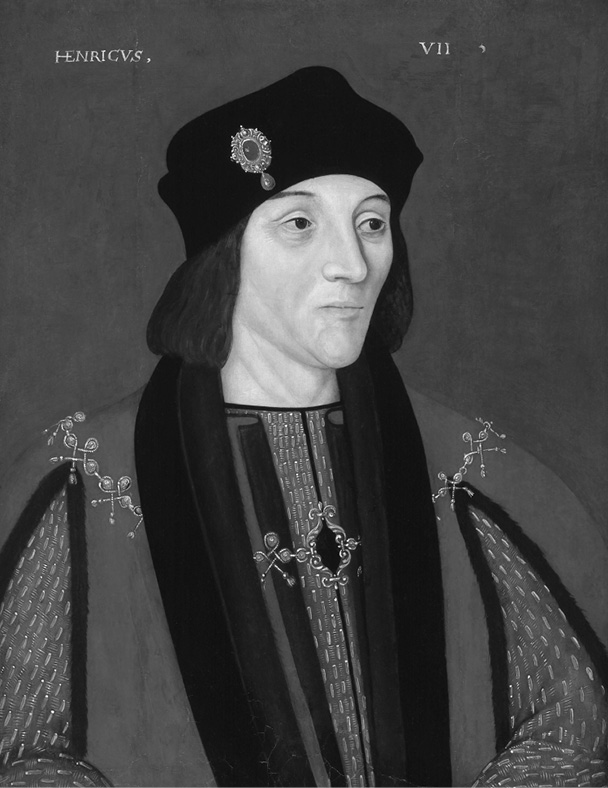
Henry VIIs claim to the English throne was not strong: he was a descendant of John of Gaunt, via his mother and a father whose birth had to be declared legitimate by Parliament.
The Wars of the Roses
To understand how Henry came to be king, we must first look at the situation in England at the time he took power. During this period, the English crown was being fought over by two great noble families, the houses of York and Lancaster. Both traced their ancestry to the Plantagenet King Edward III (reigned 132777), and both felt that they were his rightful heirs. This period of unrest is known as the Wars of the Roses because each house chose a rose as its symbol the Lancastrians sported a red rose, the Yorkists a white one.
The Lancastrians were descended from the first Duke of Lancaster, John of Gaunt (134099), a son of Edward III. They held the throne of England for 72 years, through the reigns of Henry IV, Henry V and Henry VI. But the last of these, Henry VI (142171), was a weak king, and during his unstable reign the Yorkists attempted to seize power, sparking the Wars of the Roses.
In 1471, after 16 years of fighting, the House of York won a decisive victory. Both Henry VI and his son Edward were killed shortly after the battle, ending the Lancastrian line of succession. Edward, Duke of York, was crowned King Edward IV (for the second time hed also been king from 1461 to 1470), and it seemed that the Wars of the Roses had finally been won by the Yorkists.
Except that the Lancastrian line was not quite extinguished. All the legitimate descendants of John of Gaunt had died out or been killed, but the Lancastrian patriarch had also had quite a few children born out of wedlock, and a descendant of one of these illegitimate offspring now turned up on the scene as the new Lancastrian claimant. That man was Henry Tudor.
Meanwhile, the Yorkists were having trouble establishing a royal dynasty. In 1483, Edward IV unexpectedly died. Just 86 days later, his son, 13-year-old Edward V, mysteriously disappeared from the Tower of London, along with his younger brother, Richard of Shrewsbury, Duke of York. Edward V was succeeded by his uncle Richard. Richard III proved an unpopular ruler, and support among the nobility began shifting back towards the Lancastrians which meant Henry Tudor, despite his illegitimate line of descent. Henry raised an army in France and invaded in 1485, defeating Richard at the Battle of Bosworth Field. Richard was killed in the battle, and Henry Tudor was shortly thereafter crowned King Henry VII.
By marrying Elizabeth of York, Henry managed to unite the two rival houses and bring the Wars of the Roses to an end. However, the Yorkist challenge would flicker on for a while longer in the form of a number of rebellions. The final pitched battle of the wars was fought in 1487, when Henrys army defeated the Yorkist pretender Lambert Simnel.
The basis of Henrys claim
Henrys mother was Margaret Beaufort, granddaughter of John Beaufort, son of John of Gaunt and his mistress Katherine Swynford. Thus, Henrys claim to the throne was especially tenuous, for it was not only through illegitimate descent, but also through a woman Margaret. Moreover, in 1407, King Henry IV decreed that the descendants of Gaunt and Swynford were ineligible for the throne, further weakening Henry Tudors claim.
However, Henry did have another royal connection, through his father, Edmund Tudor, 1st Earl of Richmond. Edmunds father was Owen Tudor. Originally from Anglesey in Wales, Owen had been a courtier of King Henry V. After the King died, Owen became the lover, and possibly husband, of his widow, Catherine of Valois. They had several children together, including Edmund.
Henry could also point to his Welsh ancestry. The Tudors were an old Anglesey family that claimed descent from Cadwaladr, a legendary seventh-century king. This would help Henry attract support during his armys march through Wales on the way to the Battle of Bosworth Field.
Although Henry owed much to his paternal heritage, he never met his father. While Margaret Beaufort was pregnant, her husband Edmund was in South Wales, fighting for Henry VI against the Yorkists. He was captured and imprisoned in Carmarthen Castle, and died there, three months before his son was born.
Early life
Henry Tudor was born on 28 January 1457 at Pembroke Castle in Wales. His mother Margaret was just 13 years old at the time, and already a widow. At first they were looked after by Jasper Tudor, Earl of Pembroke and younger brother of Edmund. But Jasper was forced to flee abroad in 1461 when the Yorkist King Edward IV took power, and care of Henry and his mother was entrusted to the Yorkist William Herbert. During a brief resurgence of Lancastrian fortunes (146971), Jasper Tudor returned and Henry was brought to the court of Henry VI. But when Edward IV regained the throne in 1471, Henry, Jasper, Margaret and the other Lancastrians fled to Brittany, where they would remain for 12 years.
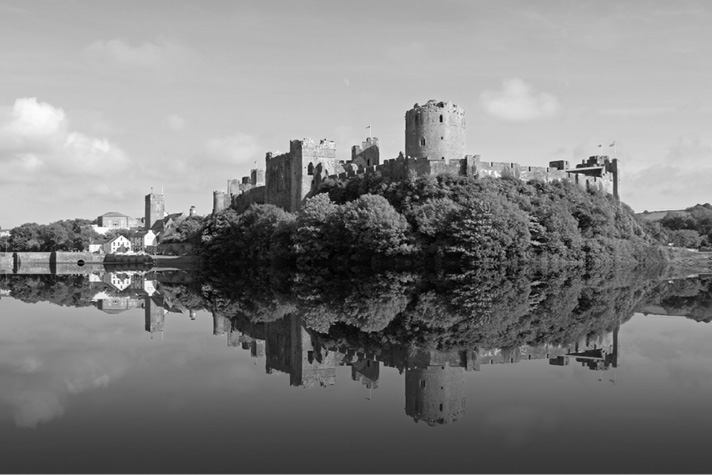
Henry was born in Wales at Pembroke Castle, beside the River Cleddau.
In 1483, the now adult Henry believed his time had come: Edward IV had died; his son and heir, Edward V, had disappeared, together with his younger brother; and the unpopular Richard III had seized the throne. Henry raised an army of Bretons, planning to time his invasion to coincide with an uprising of his supporters in England. However, a storm separated Henry from the main body of his fleet and the uprising failed, forcing Henry to return to Brittany. Richard III, alarmed by the attempted invasion, pressured the Bretons to hand Henry over to him. Before they could do so, Henry escaped across the border to France.


